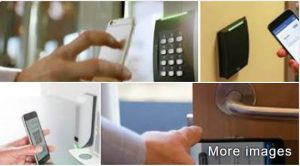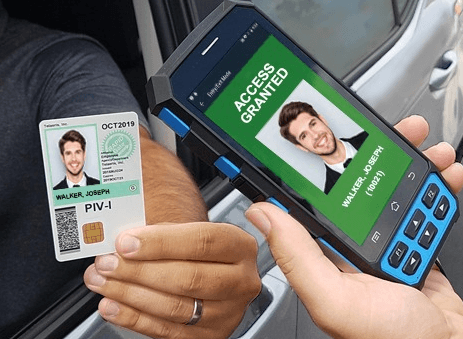Telaeris and Mobile Access Control
Starting in 2008, Telaeris has coined our XPressEntry system as “Mobile Access Control System.” Our handheld badge readers perform most functions a Physical Access Control System (PACS) can provide, including:
- Badge verification
- Entry/Exit tracking
- Remote opening of doors
- Visitor management
- Emergency rostering
It made perfect sense to us to replace “Physical” in PACS with “Mobile” to get “Mobile Access Control” as a description. Even before that, in 2006, we built a mobile access panel with wireless readers into a cart which we called our MACS – Mobile Access Controls System – platform (see Don’t Get Off the Bus!). And through 2010, we were a top performer on Google for this group of keywords.
The Battle for the Keywords
However, the world moves on, as do definitions. Around 2011, HID Global began a huge PR campaign paying to capture the words “Mobile Access Control” in Google AdWords to mean using a cell phone and an app to unlock a door. After years of HID’s PR campaign, they and other vendors continue to pay big bucks to fight for control of these keywords on Google. Now, in 2019, if you search for “Mobile Access Control” you see the image below on the right hand side of the search results:

Obviously, pointing to using a cell phone to open a door. The Telaeris entry for these keywords doesn’t show up until the 5th page. This was a nice video HID produced early on, showing how convenient “Mobile Access Control” could be for a user.
Cell Phones at the Door
Using a cell phone to access a door reader is now the new definition of “Mobile Access Control.” Other terms that the industry seem to accept are “Mobile Access Credentials” or “Smartphone Access Card.” Regardless of what you call it, here is how we at Telaeris now define it:
“Mobile Access Control” is the use of an app on an NFC or BLE enabled smartphone to open a door.
For most physical access, employees open doors using their badge (RFID, magstripe or other technology), PIN, and/or biometric credential. But as everyone now always has their mobile phones with them, the industry identified smartphones as a new medium to store credentials. This transition is aided by Apple iOS and Google Android both embracing Bluetooth Low Energy (BLE) and Near Field Technology (NFC) communications.
The use of the cell phone to open a door or gate provides a few really nice features, specifically:
- BLE Range can be meters instead of inches
- People often have their cell phones in their hands, which is convenient at doors.
- It does not require another device.
However, there are still many challenges for this technology. Unlike the old trifecta of Card/PIN/Biometrics, which always work, your cellphone does not work with a dead battery. Unfortunately, the market is fragmented. Each vendor has their own competing, proprietary infrastructures, which require replacement of all the readers at your points of access. Mobile credentials also have a significant learning curve and management overhead. Lastly, these credentials are subject to different attack vectors than security personnel see with physical credentials.
“Handheld Badge Readers” It Is

So we lost the battle for the “Mobile Access Control” keywords. Where does that leave us now? Hoping our customers will click down five or more pages until they find us? Certainly not!
It turns out that when people search for us, they search for “handheld badge reader” products. By listening to how our customers refer to us internally and externally, we have refocused how we market ourselves – to great success.
In a strange “twist” of fate, we now have customers asking for us to enable our readers to accept HID’s smartphone credentials. Since we are HID partners, we can directly read their app credentials on our XPID device. What wonderful irony! Using a handheld device to read a mobile access credential in any location for any purpose. “Mobile Access Control,” indeed.


Leave A Comment